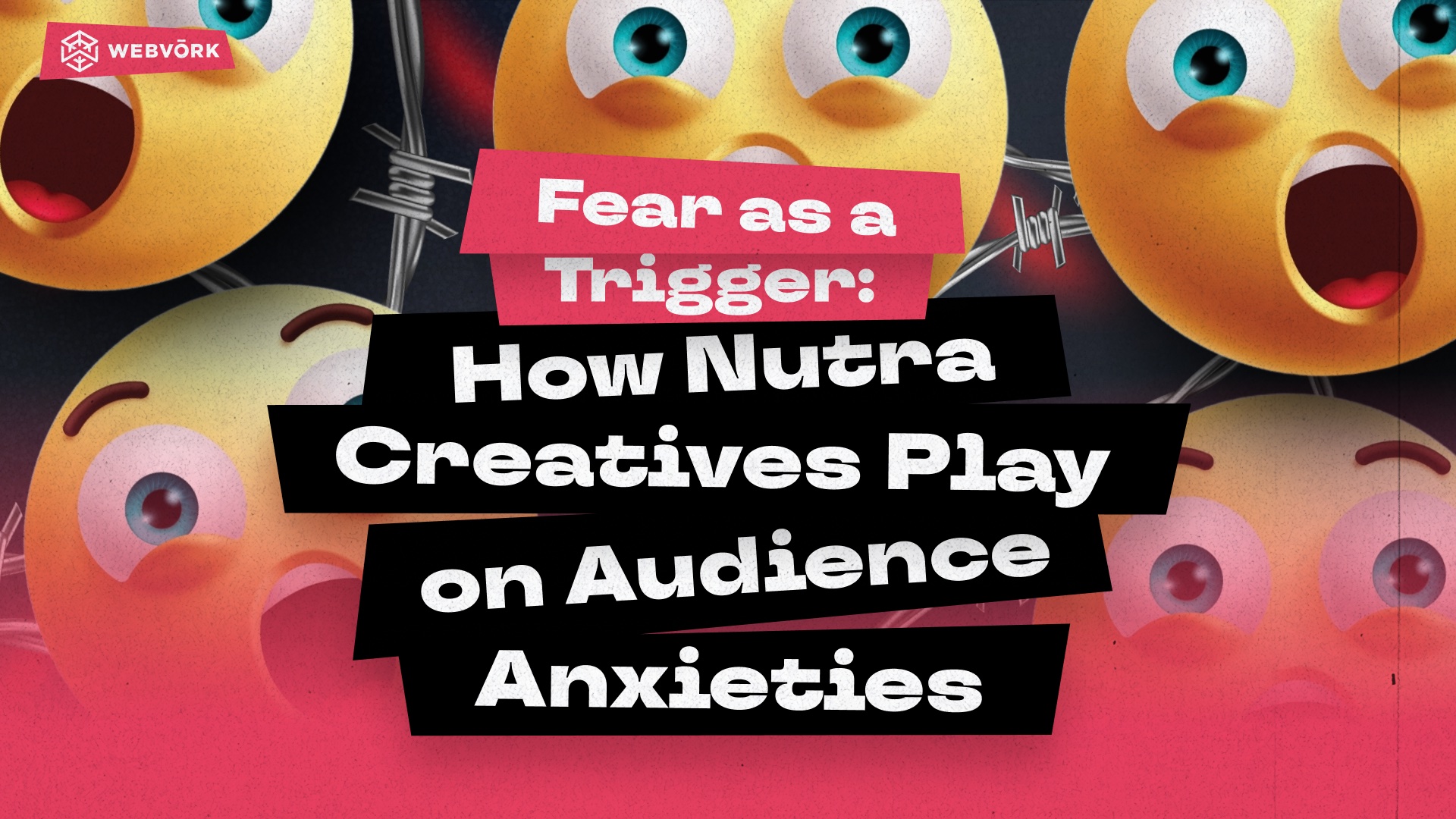Anxiety trigger: how advertising creatives affect the fears of the target audience

Fear is one of the most powerful emotions that can be worked with in marketing. It speeds up decision-making, encourages action right then and there and prepares the ground for a purchase.
But this tool has a downside in Europe. Laws on advertising dietary supplements, strict Google and Meta policies, GDPR requirements – all this complicates the work. Therefore, the main task when building such a sales funnel is to arouse excitement in the user and lead to a purchase so that moderation allows the ad, and the audience perceives it as care, not manipulation.
Why fear works
A person is designed in such a way that alarm signals instantly intercept attention. We can scroll through the feed mindlessly until we see something that potentially threatens our health, beauty or well-being.
In affiliate marketing, this is especially effective for the audience of 40+ years of age, who are beginning to pay more attention to their condition. Even a gentle hint of a problem makes them linger on the creative and read the text.
It is important to remember: in Europe, moderate anxiety works well, but it’s not panic. A caring delivery is valued most here.
Main fears that can be played on
1. Fear of illness and deteriorating health
It does not necessarily have to be cancer or a heart attack. But you can talk about a decrease in energy, chronic fatigue, discomfort. Instead of saying “If you do not treat it, you will die”, say “If you ignore it, it will be more difficult to return to your usual rhythm of life”.
2. Fear of losing attractiveness
Hair loss, wrinkles, excess weight – all this is painful for people. But instead of shocking everyone with before-and-after photos, it is better to show a soft contrast: a tired face vs. a fresh one, dull hair vs. shiny.
3. Fear of missing out (FOMO effect)
The “the sooner you start, the easier it is to maintain health” way. Here, you can play on the desire not to miss an opportunity while the changes are still reversible.
4. Fear of medical interventions
Many people are afraid of surgeries and pills that they’d need to take their whole life. You can hint that there is a way to avoid serious treatment if you take care of yourself now.
How to safely use anxiety triggers
To ensure that such creative content passes moderation and does not cause a wave of complaints, you need to remember three key rules:
Focus on prevention, not on the threat
Instead of saying “Your health is a lost cause without this”, say “It is easier to maintain good health with this.”
Symptoms instead of diagnoses
“Feeling tired, heavy legs” sounds safer than “varicose veins” or “anemia.”
Stories instead of shocking
Storytelling works better than direct intimidation. The story of a person who noticed alarming changes and decided to prevent them evokes trust and empathy.
Mistakes to avoid
Overdoing it with shock content
People in Europe quickly complain about offensive or overly frightening content, and the platform immediately blocks the ad.
Direct medical promises
“Will cure diabetes” or “will remove arthritis in 5 days” – do not mislead the buyer, this is fraught with low-quality traffic and user complaints.
Mentioning diseases
In most EU countries, it is prohibited to advertise dietary supplements as a remedy for specific diseases. Choose more streamlined wording and a list of symptoms.
To conclude,
A good creative shouldn’t frighten a person or cause disgust. It’s like a conversation with a friend, you do not shout that everything is lost, but calmly say that it makes sense to do this now, so as not to regret it later.
If your ad combines anxiety with hope, and not panic, conversions will grow, and accounts will remain in good standing.